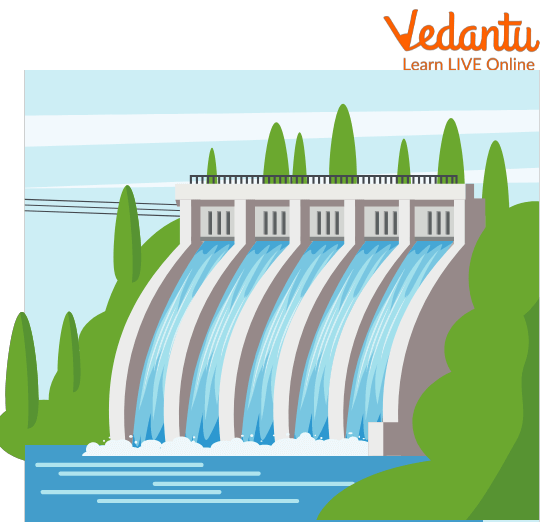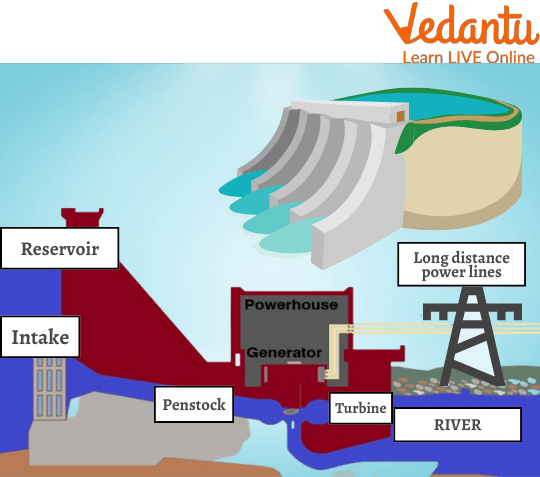




Introduction to Hydroelectric Power
Having been established for over a generation, hydropower is today the main domestic source of clean, renewable electricity in the country. What might it be expected to do in 2050?
Hydropower supports more than 143,000 employees in engineering, manufacturing, construction, and utility operations and maintenance, all while enhancing the environment and boosting our economy. It generates around 7% of the country's electricity. Isn’t it fascinating to know? So let’s get started on learning all about Hydroelectric Power.
What is Hydropower?
All around the world, hydroelectric dams trap vast volumes of water behind a reservoir.
Most hydroelectric projects build a reservoir by constructing a sizable dam to flood a region. Through pipes in the dam, this trapped water can escape. A turbine connected to an electricity-generating generator is turned by the water flowing through the pipes.

Hydroelectric Power
Advantages of Hydropower
Water is abundant, cost-free, and regenerative.
Hydroelectric power uses water to generate electricity without emitting any carbon dioxide.
As long as there is adequate water, electricity can be produced continuously. But since the reservoir occasionally has to refuel, this cannot happen daily.
It is possible to control when electricity is generated by opening and closing the dam gates.
Altering the amount of water that may flow can affect how much electricity is generated.
Although that does depend on plenty of rain, especially for "run of the river" systems, it is significantly more dependable than solar and wind power.
Important and Fun Facts about Hydropower
In addition to generating power, dams are constructed for various purposes, including irrigation, trade and navigation, flood control, or the construction of reservoirs for recreational purposes. As per the recent data, 45.8 GW out of 375.32 GW installed power capacity belongs to hydroelectric power.
Fish and other species can freely migrate around dams and parts of rivers thanks to dam equipment. Among the methods used to assist fish migrations are fish elevators and fish ladders.
Pumped storage is a different kind of hydropower that functions similarly to a battery by storing the electricity produced by the other power sources including solar, wind, and nuclear for later use. Pumping water from a separate reservoir at a lower elevation up to a reservoir at a higher elevation is how it stores energy.
Some hydropower plants have a short ramp-up time from zero to maximum output, which makes them perfect for supplying electricity to unexpected spikes in demand.
With 63 sites identified and acknowledged for their essential grid services in national energy plans, India has a potential for approximately 90 GW of pumped storage.
The hydropower potential of India is around 1,45,000 MW and at 60% load factor, it can meet the demand of around 85, 000 MW.

Power Generation Through Dam
Summary
A dam or other construction that alters the natural movement of a river or even other body of water is used to generate hydropower, often known as hydroelectric power. Hydropower uses the perpetual, never-ending water cycle to generate energy, which uses water as a fuel and leaves no waste products behind. Although there are many different kinds of hydropower plants, they are always propelled by the kinetic energy of water moving downstream. We hope you enjoyed reading this article, in case of any other doubts, feel free to ask in the comments.
FAQs on Facts About Hydropower
1. What role does hydropower play?
Hydropower plants offer crucial backup power during significant electricity outages or disturbances because they can provide power to the grid immediately.
2. Does hydropower contribute to pollution?
Neither the air nor the water is contaminated by hydropower. However, hydropower plants have the potential to significantly alter the environment, as well as homes, land usage, and natural habitats near the dam.
3. How safe is hydropower?
Hydropower is a clean energy source that produces electricity without polluting the environment or leaving behind harmful byproducts.
4. What is the hydropower industry's future?
Infrastructure may boost productivity, make up some of the losses brought on by the drought, and guarantee that plants can continue functioning for many years. Globally, $127 billion will be spent on updating outdated plants between now and 2030.
5. Why isn't hydropower renewable?
The effect of dams on fish and river flows is why some people are reluctant to refer to hydropower as a green energy source. Several sizable dams prevent migrating fish from attaining their spawning areas. River and stream flows, temperatures, and silt loads are all impacted by dam reservoirs.









